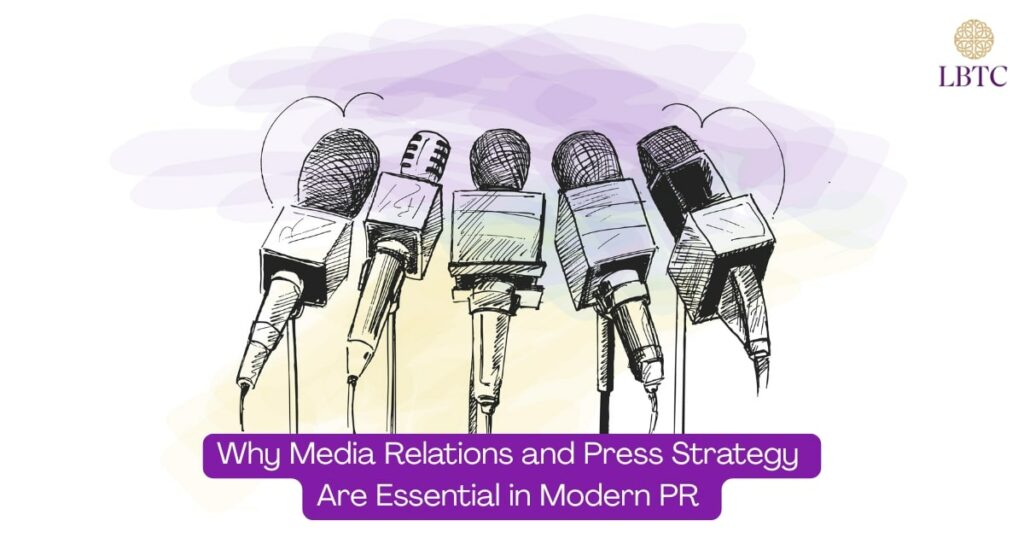
In a world with advertising on every corner, standing out has never been more critical. The average UK resident spends over four hours a day on their smartphone, encountering an estimated 16,000 adverts daily (The Ecologist, 2024). Consumers are overloaded with adverts and more information each day.
Strategic press strategy and strong media relations are key to effective public relations (PR). These two tools help organisations build trust, shape brand image, and boost the impact of their marketing.
Understanding the Core of PR
Media relations mean managing communication between an organisation and journalists. It helps to build relationships based on trust, credibility, and consistency. Media relations differ from the general term PR because they focus on earned media rather than paid content.
Press strategy refers to a structured plan for interacting with various types of media outlets. It includes timing, messaging, and audience targeting. This plan is typically developed in conjunction with business goals or campaign timelines. As technology continues to reshape the marketing field, press strategies now use online pressrooms, social media outreach, and email briefings. All of these are helpful for branding and marketing strategies.
Why Strategy Matter?
Strategic timing ensures that announcements and campaigns align with public interest and current events. It also helps maintain consistent brand messaging across all platforms, which is crucial for establishing trust and brand identity.
A thought-out media relations and press strategy allows organisations to take control of their public perception, especially in times of crisis. Companies with clear messaging strategies tend to recover more quickly and maintain greater public trust, according to the Harvard Business Review.
Press Strategy in Action
Positive press is often seen on several news networks and websites, leading to improved search engine rankings and more visibility. On the other hand, adverts are usually temporary, while good press leaves a lasting impression. Reputation management starts with preparation, not reaction. Brands without a clear press strategy often struggle to respond effectively during crises. Being proactive helps shape a brand’s reputation and limits the spread of misinformation before it escalates.
Media Strategy in Action
Audiences are also more likely to trust independent media coverage than adverts. Earned media has more credibility than paid content, making it more influential in persuading audiences. Strong media relations help organisations secure this kind of trusted exposure.
Media relations heavily rely on trust and understanding between PR professionals and journalists. Over time, these relationships lead to better story placement and more credible coverage.
An effective media strategy starts long before a story reaches the public. It involves identifying the right publications, researching editorial calendars, and understanding the types of stories that resonate with specific audiences. Instead of sending out generic announcements, strategic communicators use targeted messages that are made specifically for each outlet of tone, focus, and audience. This preparation ensures that when the time comes for a launch, new initiative, or leadership change, the message will land in a context where it is more likely to be seen, understood, and shared.
Conclusion
Press strategy and media relations are essential tools for any organisation that wants to communicate with intention and credibility. They allow you to respond with clarity during high-pressure moments and position your brand thoughtfully when opportunities arise. Without a plan, even the most compelling messages risk being overlooked or misinterpreted.
When used effectively, these strategies support every aspect of a brand’s public presence, from its introduction to its lasting impression. They bring structure to communication, strengthen trust with external audiences, and ensure your message is delivered in a way that reflects your brand’s values and vision. Whether you’re new to communications or looking to sharpen your skills, enrolling in a PR course can equip you with the tools and strategies needed to navigate today’s complex media landscape with confidence.

Leave a Reply